Journal of Civil Engineering and Environmental Sciences
Wood-cement-steatite panels used in replacement of gypsum boards in residential and commercial buildings: contribution to the thermal mass
Viet-Anh Vu1, Benoit Bissonnette2*, Alain Cloutier1 and Pierre Blanchet1
2Department of Civil Engineering and Water Engineering, Laval University, Québec, QC, G1V 0A6, Canada
Cite this as
Vu V, Bissonnette B, Cloutier A, Blanchet P (2022) Wood-cement-steatite panels used in replacement of gypsum boards in residential and commercial buildings: contribution to the thermal mass. J Civil Eng Environ Sci 8(2): 084-092. DOI: 10.17352/2455-488X.000057Copyright License
© 2022 Vu V, et al. This is an open-access article distributed under the terms of the Creative Commons Attribution License, which permits unrestricted use, distribution, and reproduction in any medium, provided the original author and source are credited.This article reports the results of a study carried out to evaluate the influence of wood-cement-steatite partitions on the thermal performance of a small building. The interior walls of two identical 2.0 × 2.5 × 3.0 m experimental wooden frame huts (tiny houses, with one door and one window), designed and built following the National Building Code of Canada, were covered with standard gypsum boards in one case (GB hut) and a combination of gypsum boards and wood-cement-steatite panels in the other case (WCSP hut). The thermal behavior of both huts, located on the campus of Laval University, in Québec (QC), Canada was monitored over a testing period extending from mid-march to the first week of July 2019. Depending on the moment during that period (cold weather, mild weather) and the characteristics being evaluated, the temperature inside the huts was conditioned or not with an electric heater. The following parameters were recorded: outdoor temperature, the temperature inside the two huts, and, when applicable, their electricity consumption. In cold weather, the wood-cement-steatite panels contributed to reducing the electricity consumption by 5.2% over that of the reference GB hut. In mild weather, wood-cement-steatite panels were found to improve the comfort inside the test hut by leveling off the temperature variations, with reductions ranging from 0.3 °C to 3.8 °C. Both the differences in electricity consumption and indoor temperature variations were determined to be statistically significant, with p - values inferior to 0.005. The results generated in this part of the study further strengthen the potential of WCSP as a real alternative to gypsum boards for drywall partitioning in residential and commercial buildings. In addition to their many advantageous constructive properties, such as water resistance, flexural strength, screw withdrawal resistance, and fire resistance, the improvements they could yield in energy efficiency and thermal comfort make it a quite promising partitioning option.
Introduction
Gypsum boards (GB), commonly referred to as drywall, are widely used for interior walls and ceilings in North America [1], both in residential and commercial buildings. The core material of these boards is a sulfate mineral composed of calcium sulfate in the form of dehydrated crystals, typically extruded between thick sheets of facer and backer paper [2]. Because of its widespread use, GB waste disposal is a growing problem in the construction industry. In Canada, more than half a million tons of GB waste is generated annually [3]. According to many studies on the characterization of construction and demolition (C&D) debris in Canada, GB waste accounts for about 9% (in weight) of the total construction and demolition C&D waste streams [4]. GB decomposition increases the sulfate content in the landfill leachate and contaminates the surface water and groundwater. Excessive concentration of sulfate has a serious impact on drinking water systems and supply [5].
As part of a global effort towards a reduction of C&D waste disposal, various research efforts have been devoted to the recycling and reuse of gypsum [2,6], but also towards substitutes for GB [7]. In a study by Vu, et al. [8], wood-cement-steatite panels (WCSP) were shown to provide quite an interesting alternative to gypsum boards. Indeed, this study has shown that the formed surface of WCSP containing 15% of steatite powder (SP) is comparable in quality to the GB paper facer, owing notably to the settling of SP at the bottom of the mold. Furthermore, WCSP can be easily cut with a handsaw and installed in the same way as gypsum boards. In comparison with GB, they have higher water resistance, flexural strength properties, screw withdrawal resistance, and fire resistance. Wood-cement-steatite panels can be classified as a non-flashover and non-flame-spread material. In addition to these advantages, the designed wood-cement-steatite panels have 34% more thermal mass than GB. In a global context where, on the one hand, energy supplies are becoming increasingly uncertain and, on the other hand, the need for reducing the carbon footprint keeps getting more urgent, all constructive ways to reduce our consumption of energy must be evaluated. In buildings, the thermal mass plays an important role in the storage of heat energy. Which impacts the indoor temperature, power needs, and occupants’ comfort [9]. Various studies have been carried out given reducing the heating and cooling energy consumption through optimization of the building thermal mass [10,11] or evaluating the influence of thermal mass on the thermal behavior of individual components such as exterior walls [12], interior walls [13], and the whole building envelope [14]. With appropriate use, WCSP panels can improve the building’s thermal mass and thus leading to increased energy efficiency. Studies on building thermal inertia generally tend to conclude that additional thermal inertia in a building can increase the occupants’ comfort and reduce energy demand [11]. The study reported in this paper aimed at assessing whether WCSP panels could store solar energy during the day and release it at night, thus reducing electric heating consumption in a typical lightweight wood-frame building exposed to the Canadian climate. The performance of WCSP panels and GB was assessed in experimental huts located in Québec (QC), Canada, from the coldest days of spring (March 2019) to the warmest days of summer (July 2019).
Experimental
Materials
Wood-cement-steatite panels: The wood-cement-steatite mixture used in this investigation was designed in a previous investigation with the intent of meeting the general requirements for gypsum panels and minimizing the portland cement content, notably through the use of steatite powder as a filler [8]. The wood-cement-steatite proportions by weight were 0.35–0.85–0.15.
The air-dried wood particles selected for the study are produced from white spruce (Picea glauca [Moench] Voss) trees harvested at the Petawawa Research Forest in Mattawa (ON), Canada. It was refined with a Pallmann PSKM 300 double-stream ring refiner. It was then sieved to keep the particles ranging from 1.0 mm to 3.2 mm in size.
CSA type 10 (GU) portland cement was used as a primary binder. Steatite powder is obtained as a by-product of soapstone processing and disposed of as waste in large quantities. It was supplied by a natural stone quarrier located in Québec (QC), Canada.
After mixing in an ordinary mortar mixer, each wood-cement-SP-water mixture was cast one at a time in the same 450×330×14 mm wooden mold, closed with a lid after pouring, and held in place by C-clamps. The wet mixture was poured into the mold, the surface was leveled off with a wood screed, and the lid was finally secured in place. Using the pressure of the lid, the panel thickness was reduced to 13 mm. The hardened panels were stripped from the mold at the age of 3 days and then stored in a conditioning chamber at 23 °C and 60% R.H. for 28 days. The panels were then cut with a 5 mm wide saw blade to meet the required design dimension at the time of the installation (Figure 1). Panels varying from 230 mm to 300 mm in width and 300 mm to 440 mm in length were used to build internal walls in the experimental hut.
Gypsum boards: The GB used on a comparative basis in this study is manufactured by Georgia-Pacific and distributed under the commercial name ToughRock®. It is usually used in new building constructions or renovation work as a wall or ceiling covering material. The panels used in this study were 1/2″ (12.7 mm) thick.
Comparative thermal properties: The thermal properties of the gypsum boards and wood-steatite-cement panels tested in the present study are summarized in Table 1. Further information and material characterization data can be found elsewhere [8].
Test facility
Experimental huts: In a previous study on biosourced phase change materials [13], two identical test huts, 2.0 m (D) × 2.5 m (W) × and 3.0 m (H) in size, were designed and built in 2018-2019 on the campus of Laval University, Québec (QC), Canada, under the National Building Code of Canada (Figure 2A). The wall construction shown in Figure 2B is a common design for a medium-high insulation building in Eastern Canada. Each hut had one window and one door, located on the south and west sides respectively. The window was equipped with low-emissivity double glass to minimize the amount of ultraviolet and infrared light, which comes through the glass, without affecting the amount of light entering the huts. Rigid polystyrene boards were installed on the inner side of the door to increase the insulation of the huts.
The window/floor surface ratio of the huts was 55.6% and designed to promote solar health gains. In comparison, for typical thermally passive houses in Canada, the window/floor ratio can reach up to 25% [15]. Moreover, in most residential buildings, window coverings are generally installed. When covered with GB, the test hut walls had a thermal resistance of 3.5 RSI (K·m2/W) [13]. The exterior wood siding thermal resistance was not considered, because the air gap behind it is naturally ventilated. The floors and ceilings, which were made with 250 mm high, fiberglass-insulated wooden I-beams, had a thermal resistance of 5.6 RSI (K·m2/W) [13].
The inside dimensions of the huts were 2.06 m (D) × 1.55 m (W) ×and 2.26 m (H). For the present study, the interior walls of one hut were covered solely with GB, while the inner walls of the other hut were covered in part (42%) with WCSP panels, and the remainder with GB. In the latter, the WCSP panels were located on the walls facing the hut window in the south direction. Table 2 shows the respective wall surface areas covered by GB and WCSP panels compared to the total interior (floor, ceiling, and walls) and drywall surface areas. Apart from the drywall layout, both huts were designed and equipped in the same way.
Testing equipment and instrumentation: Each test hut was equipped with a 500 W/120 V electric baseboard heater controlled by a programmable thermostat. In an occupied building, the interior air is mixed by forced ventilation and by the occupants’ movements. A small fan (100 mm diameter) was provided in each hut to simulate this and to avoid air temperature stratification. For summer period testing, the heating was turned off and a standard domestic fan with an airflow of 119 m3/h was added. During preliminary experiments, temperature sensors installed in the huts at various heights confirmed air stratification. Therefore, additional small fans were added. The electrical power consumption of these fans was considered in the global energy balance to assess the performance of the panels. The dry-bulb temperature was measured with a Kimo PT100 sensor and recorded using a Kimo Ami 310 data logger. The temperature was recorded every five minutes. Electrical power consumption used for heating was measured using a Floureon TS-836US electric energy meter. As automatic data logging was not possible with the latter, readings of the electrical heating consumption were taken and recorded once a day during the experiments.
Methodology
The thermal behavior of the two huts, with and without WCSP, was compared over an extended period (March to July 2019) to comprise both cold and warm weather conditions. The outside temperature data were obtained from Historical Climate Data found on the website of the Government of Canada [16], for the weather station located on the campus of the university (lat.: 46 °46’49.000” N; long.: 71 °17’15.000” W). Heating was essentially used from March to May. In the May to July period, ventilation (119 m3/h) was on all day long to homogenize the temperature inside the hut. Various data were collected daily, notably the maximum temperature and average diurnal temperature (from 8:00 to 20:00), which are the most important in this study. From March until the end of May, the heating set point was kept at 20 °C days and nights. The electrical power consumption data were recorded daily at 10:00.
To compare their thermal behavior in similar conditions, preliminary tests had been conducted for 14 days in the two test huts with the inner walls covered with gypsum boards only (before replacing some of the gypsum boards with wood-cement-steatite panels in one of them for the experimental program). The test data recorded for both huts were satisfactorily close, with a daily maximum temperature difference of 0.2 °C. The electrical heating power consumption records over the 14-d period were also compared and the data revealed a slight difference of the order of 1.8% (0.02 kWh) between the two huts. A correction factor of 1.8% was thus applied for the multiple-day consumption data that will be presented thereafter in this paper. The correction factor was not applied when considering the consumption of a single day, since the former was calculated using data averaged over two weeks.
Results and discussion
Thermal behavior of the huts in cold weather conditions
Heat loss response of the test huts: In the first experiments, the impact of the drywall boards upon the heat loss rate of each test hut was assessed over a 48-h period. Both huts were first heated to 32 °C and maintained at this temperature for 12 hours, with the window covered by a dark canvas to eliminate solar heating inside (Figure 3A). The heater was turned off automatically by a timer after 12 hours. The temperature inside the huts was then recorded over a 48-h period, with no electrical and limited solar heating. The results show that the inside temperature of the WCSP hut decreased more slowly than that of the GB hut (Figure 3B). This tends to indicate that the WCSP panels are more efficient in storing heat and reradiating it when the surrounding temperature decreases. The difference between the inside temperatures recorded in the two huts reached a maximum of 3.8 °C during the transitory period. During the second day, the temperature in both huts slightly increased due to solar heating, although the outside temperature remained lower than the inside temperature throughout the test period.
Thermal response of the huts with solar heating only: After the heat loss experiments, the dark canvas covering the windows (Figure 3A) was removed. Both huts were then heated to 30 °C and maintained at this temperature for 12 hours to ensure stable conditions inside. At that moment, the heater was turned off automatically by the timer, and the temperature inside the huts was recorded continuously (frequency: 5 minutes).
Cold weather thermal response during a sunny day: The evolution of temperature inside the huts during a late winter day (2019/03/19) is shown in Figure 4. During that specific day, the GB hut and the WCSP hut reached maximum temperatures of 32.7 °C and 30.6 °C respectively. This result shows that the WCSP panels are more effective in reducing daily high inside temperature peaks in the hut. Similarly, during night time, the temperature decrease inside the WCSP hut was lower than in the GB hut. The minimum temperatures of the GB and WCSP huts reached 0.6 °C and 4.3 °C, respectively. The observed lower cooling rate can presumably be attributed to the WCSP panels greater heat release overnight. Over the 36-hour monitoring period, the temperature amplitude in the GB reached 32.1 °C, while it was limited to 26.3 °C in the WCSP hut. With a reduction in the daily amplitude of this order (18%), bearing in mind that more than half of the interior walls of that hut were covered with GB, WCSP appears to carry interesting potential given enhancing the building comfort characteristics.
Cold weather thermal response during an overcast day: The evolution of temperature in the huts for a late winter cloudy day (2019/03/15) is shown in Figure 5. During that specific day, the indoor temperature differential between the two huts was not as significant as in. Both reached a maximum temperature of 18.5 °C, almost at the same time. Then, the inside temperature in the gypsum board hut decreased slightly faster than that of the WCSP hut. The results show that the limited solar energy available during a cloudy winter day did not allow the WCSP hut to store much heat, which explains the smaller temperature difference experienced this time in comparison with that of the GB hut. This result tends to confirm that the beneficial influence of the WCSP panels is related to the variations in weather conditions, with its capacity to store and release energy.
Thermal behavior of the test huts with solar and electrical heating: In this phase of the experiments, electrical heating was turned on in each hut during a period of 65 days extending from March 31 to June 04, 2019, with the set point kept at 20 °C day and night. The monitoring period can be subdivided into two subsets, corresponding essentially to April and May. In April, the average temperature recorded on the test site was 2.8 °C (avg. max./min: 6.3 °C/-0.6 °C), while in May, it increased to 9.9 °C (avg. max./min: 14.7 °C/5.1 °C).
Figure 6 shows in two graphs the daily and cumulative electricity consumption recorded for each test hut over the monitored period. The electricity consumption for both huts was significantly higher in April than in May, which is consistent with the temperature data. In fact, from March 31 to April 30, the WCSP and the GB huts consumed 74.7 kWh and 71.3 kWh, respectively, whereas from April 30 to June 4, the cumulative consumption was only 29.1 kWh and 27.1 kWh, respectively. The results show that the cumulative electricity consumption of the WCSP hut was lower than that of the GB hut by 4.6% in May, and 6.9% in June, for an average of 5.2% over the total monitoring period. When looking at the daily data, what is striking is that the daily consumption in the WCSP hut is always lower, for each and every day it has been recorded, without a single exception. Using a paired Student’s t-Test, the comparison of the sets of electricity consumption data collected for the two huts confirms that the reduction in electricity consumption with the use of WCSP is statistically significant, with a p - value inferior to 0.005.
Table 3 presents electricity consumption records for the GP and WCSP test hut together with relevant weather data on different days in the spring of 2019. It can readily be seen that electricity consumption was more important during colder, cloudy days. This was the case for example on March 31, April 1, 9, and 10. While a systematically lower electricity consumption is observed in the WCSP hut in comparison to that of the GB hut, it can further be observed that the difference is more significant on sunny days. For instance, the WCSP hut consumed 18.0% less heating energy than the GB hut on April 30, and 15.2% less on April 18. On cloudy, snowy, rainy, and stormy days, the WCSP panels had a less pronounced impact on the hut’s electricity consumption. In a study devoted to the effectiveness of phase-changing materials (PCM) embedded in the interior walls of the same test huts used in the present study, Mathis [13] observed a similar trend, with no significant impact of the PCM’s on the huts thermal performance during cloudy days. It should be emphasized that these huts are experimental facilities and are notably characterized by a high percentage of total wall surface compared to the floor surface (Table 2). This situation leads to a higher energy consumption per floor surface area, in comparison with the usual figures for typical housing or commercial buildings.
Thermal behavior of the huts in mild weather conditions
During June, the average daily temperature in Quebec City is usually close to 18 °C and the use of electrical heating is no longer necessary. Therefore, the electrical heating devices were turned off and a standard domestic fan with an airflow of 119 m3/h was installed in each test hut to homogenize the indoor temperature. The results of Figure 7 show that in the first half of June, although a fan was used and the electrical heating was turned off, the temperature inside the GB and WCSP huts reached maximum values of 30.6 °C and 29.9 °C, respectively. During the second half of June and early July, the maxima recorded in each test hut were even higher, at 33.5 °C and 31.8 °C, respectively.
When comparing the data on the graphs, the maximum and minimum daily temperatures inside the WCSP hut were most generally lower and higher, respectively, than in the GB hut exposed to the same conditions. Accordingly, the data summarized in Table 4 shows that the daily temperature amplitude inside the GB hut was systematically higher than in the WCSP huts. During the period considered, the daily thermal variations inside the WCSP hut were 0.3°C to 3.8 °C less than in the GB huts, with an average of 1.5 °C. Using a paired Student’s t-Test, the difference is found to be statistically significant, again with a p-value inferior to 0.005. This tends to confirm that the wood-cement-steatite panels are more effective than gypsum boards in leveling out indoor temperature variations. Moreover, the collected data show that the use of WCSP effectively contributes to reducing overheating inside the test hut on hot summer days. Indeed, on days where the outdoor temperature exceeded 25 °C, the maximum daily temperatures recorded inside the WCSP hut were between 1 °C and 2 °C less than in the GB hut.
As found previously in colder weather, when looking closely at the data, it is found that the influence of WCSP is more pronounced on sunny days. For instance, on June 6, 9, 12, 22, 24, 27, 28, and July 1-3, the difference between the daily temperature amplitude inside the two huts ranged between 1.6 and 2.1 °C. Conversely, the results show that the difference between the inside temperature of the huts was minimal on rainy and cloudy days, such as on June 11, 14 to 16, 19, 20, and 25. In these meteorological conditions, the difference in daily indoor temperature amplitude between the two huts varied from 0.3 °C to 1.4 °C.
Potential for further improvement in the thermal properties of WCSP
While the field test results generated in the experimental huts confirm the effectiveness of WCSP in improving both energy efficiency and thermal comfort, there is certainly potential for more gains. First, it should be stressed that the wood-cement-steatite panels in the tested WCSP hut represented less than half of the interior walls, with 58% of the surface being covered with GB. The thermal performance would presumably have been even superior if the interior walls had been fully covered with WCSP.
Besides, the test program reported herein was carried out using a wood-cement-steatite mixture that was primarily optimized for other constructive properties, especially water resistance, flexural strength, screw withdrawal resistance, and fire resistance [8]. There is still some leverage for increasing the heat storage capacity of WCSP just by optimizing further the mixture design with the same recycled raw materials. This could come along with a reduction in CO2 impact, by replacing a fraction of the cement with supplementary-cementing material such as a natural pozzolan or calcined clay cement.
Another interesting avenue to consider is the use of embedded phase-changing materials (PCM’ July 2019). Several studies have been devoted recently to the development of gypsum boards embodied with these materials for energy-efficient buildings [17,18]. They could be exploited advantageously in WCSP, with even more leverage.
Conclusion
This study aimed at assessing the influence of WCSP drywall on the thermal performance of a small building. In that quest, the evolution of temperature inside two instrumented timber-framed test huts, a reference one with all interior walls covered with gypsum boards and one with a portion of its walls covered instead with WCSP, was monitored in different seasonal weather conditions.
Temperature data recorded during the late winter days of 2019 while electrical heating was shut off show that the addition of WCSP improved the thermal performance of the hut over that of the reference GB hut. This results from the capacity of WCSP to store and release heat, which was observed to be more pronounced on sunny days. This translated into a higher energetic efficiency of the hut, as shown by electricity consumption data collected over two months during the spring. Under the conditions of the study, the wood-cement-steatite panels contributed to reducing the electricity consumption by 5.2% over that of the reference GB hut, which was found to be statistically significant (p - value < 0.005). During the monitoring period, the reduction reached up to 18% in a single day.
In mild weather, wood-cement-steatite panels were found to improve the comfort inside the test hut by leveling off the temperature variations and reducing the overheating on hotter days. Indeed, over a one-month monitoring period without electrical heating or cooling, the daily temperature amplitude inside the WCSP hut was observed to be systematically lower than in the GB hut. The difference in daily inside temperature amplitudes between the two test huts ranged from 0.3 °C to 3.8 °C and was determined to be statistically significant (p -value < 0.005).
The results generated in this part of the study further strengthen the potential of WCSP as a real alternative to gypsum boards for drywall partitioning in residential and commercial buildings. In addition to their many advantageous constructive properties, such as water resistance, flexural strength, screw withdrawal resistance, and fire resistance, the improvements they could yield in energy efficiency and thermal comfort make it a quite promising partitioning option. The next step will be to design and conduct long-term thermal efficiency experiments and investigate the potential for tailoring WCSP’s thermal properties, notably with optimized mixture design and with the use of embedded phase-changing materials (PCM).
This work was part of the research program of the Natural Sciences and Engineering Research Council of Canada (NSERC) Industrial Research Chair on Eco-Construction in Wood (CIRCERB) through programs IRC (IRCPJ 461745-12) and CRD (RDCPJ 445200-12). The authors are also grateful to the industrial partners of these two projects, as well as to Mr. David Lagueux, Mr. Jean Ouellet, and Mr. Mathieu Thomassin for their invaluable technical contribution.
- Jang YC, Townsend T. Sulfate leaching from recovered construction and demolition debris fines, Advances in Environmental Research. 2001; 5: 203-217.
- Turley W. What’s happening in gypsum recycling? Construction Building Materials. 1998; 5:8-12.
- Arnold P. Assessing the usage of clean drywall in the compost process. PRRFB Research and Development Findings Symposium 2010; RRFB Nova Scotia, NS, Canada.
- Christensen R. Quantification of waste and identification of opportunities for diversion from disposal. Sustainable Construction - Proc of the First Int Conf of CIB TG 16 1994; Tampa, FL, USA.
- Sawyer C, McCarty P, Parkin G. The chemistry for environmental engineering. 4th ed, 1994, McGraw-Hill Inc., New York, NY, USA.
- Ndukwe I, Yuan Q. Drywall (gyproc plasterboard) recycling and reuse as a compost-bulking agent in Canada and North America: a review. Recycling 2016; 1: 311-320.
- Vu VA, Cloutier A, Bissonnette B, Blanchet P, Duchesne J. The Effect of Wood Ash as a Partial Cement Replacement Material for Making Wood-Cement Panels. Materials (Basel). 2019 Aug 28;12(17):2766. doi: 10.3390/ma12172766. PMID: 31466332; PMCID: PMC6747851.
- Vu VA, Cloutier A, Bissonnette B, Blanchet P, Dagenais C. Steatite Powder Additives in Wood-Cement Drywall Particleboards. Materials (Basel). 2020 Oct 29;13(21):4813. doi: 10.3390/ma13214813. PMID: 33137904; PMCID: PMC7662927.
- Reilly A, Kinnane O. The impact of thermal mass on building energy consumption. Applied Energy 2017; 198: 108-121.
- Orosa JA, Oliveira AC. A field study on building inertia and its effects on indoor thermal environment Gouvernement of Canada. Renewable Energy. 2012; 37: 9-96.
- Verbeke S, Audenaert A. Thermal inertia in buildings: a review of impacts across climate and building use. Renewable and Sustainable Energy Reviews. 2017; 82: 2300-2318.
- Lindberg R, Binamu A, Teikari M. Five-year data of measured weather, energy consumption, and time-dependent temperature variations within different exterior wall structures. Energy and Building. 2004; 36 (6): 495-501.
- Mathis D, Blanchet P, Lagière P, Landry V. Performance of wood-based panels integrated with a bio-based phase change material: a full-scale experiment in a cold climate with timber-frame huts. Energies. 2018; 3093 (11).
- Long L, Ye H. The roles o
- Jang YC, Townsend T. Sulfate leaching from recovered construction and demolition debris fines, Advances in Environmental Research. 2001; 5: 203-217.
- Turley W. What’s happening in gypsum recycling? Construction Building Materials. 1998; 5:8-12.
- Arnold P. Assessing the usage of clean drywall in the compost process. PRRFB Research and Development Findings Symposium 2010; RRFB Nova Scotia, NS, Canada.
- Christensen R. Quantification of waste and identification of opportunities for diversion from disposal. Sustainable Construction - Proc of the First Int Conf of CIB TG 16 1994; Tampa, FL, USA.
- Sawyer C, McCarty P, Parkin G. The chemistry for environmental engineering. 4th ed, 1994, McGraw-Hill Inc., New York, NY, USA.
- Ndukwe I, Yuan Q. Drywall (gyproc plasterboard) recycling and reuse as a compost-bulking agent in Canada and North America: a review. Recycling 2016; 1: 311-320.
- Vu VA, Cloutier A, Bissonnette B, Blanchet P, Duchesne J. The Effect of Wood Ash as a Partial Cement Replacement Material for Making Wood-Cement Panels. Materials (Basel). 2019 Aug 28;12(17):2766. doi: 10.3390/ma12172766. PMID: 31466332; PMCID: PMC6747851.
- Vu VA, Cloutier A, Bissonnette B, Blanchet P, Dagenais C. Steatite Powder Additives in Wood-Cement Drywall Particleboards. Materials (Basel). 2020 Oct 29;13(21):4813. doi: 10.3390/ma13214813. PMID: 33137904; PMCID: PMC7662927.
- Reilly A, Kinnane O. The impact of thermal mass on building energy consumption. Applied Energy 2017; 198: 108-121.
- Orosa JA, Oliveira AC. A field study on building inertia and its effects on indoor thermal environment Gouvernement of Canada. Renewable Energy. 2012; 37: 9-96.
- Verbeke S, Audenaert A. Thermal inertia in buildings: a review of impacts across climate and building use. Renewable and Sustainable Energy Reviews. 2017; 82: 2300-2318.
- Lindberg R, Binamu A, Teikari M. Five-year data of measured weather, energy consumption, and time-dependent temperature variations within different exterior wall structures. Energy and Building. 2004; 36 (6): 495-501.
- Mathis D, Blanchet P, Lagière P, Landry V. Performance of wood-based panels integrated with a bio-based phase change material: a full-scale experiment in a cold climate with timber-frame huts. Energies. 2018; 3093 (11).
- Long L, Ye H. The roles of thermal insulation and heat storage in the energy performance of the wall materials: a simulation study. Sci Rep. 2016 Apr 7;6:24181. doi: 10.1038/srep24181. PMID: 27052186; PMCID: PMC4823728.
- Eco Habitation, Quelle est la proportion de surface vitrée nécessaire dans une maison? Guide 2659; https://www.ecohabitation.com/guides/2659/quelle-est-la-proportion-de-surface-vitree-necessaire-dans-une-maison/.
- Government of Canada. Environment and natural resources - Weather, Climate and Hazard. https://climate.weather.gc.ca/index_e.html.
- Shukla N, Fallahi A, Kosny J. Performance characterization of PCM impregnated gypsum board for building applications. Energy Procedia. 2012; 30: 370-379.
- Bake M, Shukla A, Liu S. Development of gypsum plasterboard embodied with microencapsulated phase change material for energy efficient buildings. Materials Science for Energy Technologies. 2021; 4:166-176.
- f thermal insulation and heat storage in the energy performance of the wall materials: a simulation study. Sci Rep. 2016 Apr 7;6:24181. doi: 10.1038/srep24181. PMID: 27052186; PMCID: PMC4823728.
- Eco Habitation, Quelle est la proportion de surface vitrée nécessaire dans une maison? Guide 2659; https://www.ecohabitation.com/guides/2659/quelle-est-la-proportion-de-surface-vitree-necessaire-dans-une-maison/.
- Government of Canada. Environment and natural resources - Weather, Climate and Hazard. https://climate.weather.gc.ca/index_e.html.
- Shukla N, Fallahi A, Kosny J. Performance characterization of PCM impregnated gypsum board for building applications. Energy Procedia. 2012; 30: 370-379.
- Bake M, Shukla A, Liu S. Development of gypsum plasterboard embodied with microencapsulated phase change material for energy efficient buildings. Materials Science for Energy Technologies. 2021; 4:166-176.
Article Alerts
Subscribe to our articles alerts and stay tuned.
 This work is licensed under a Creative Commons Attribution 4.0 International License.
This work is licensed under a Creative Commons Attribution 4.0 International License.

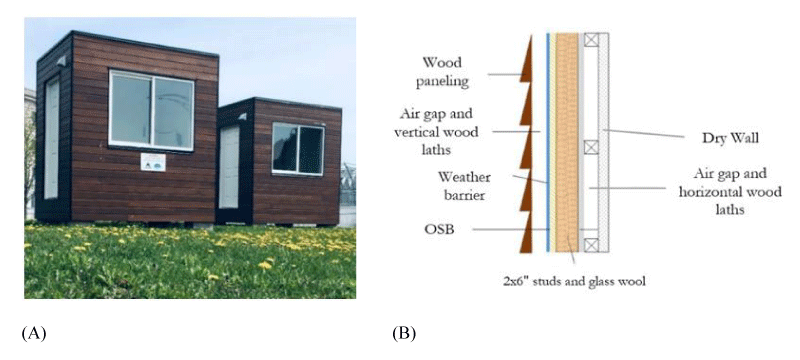
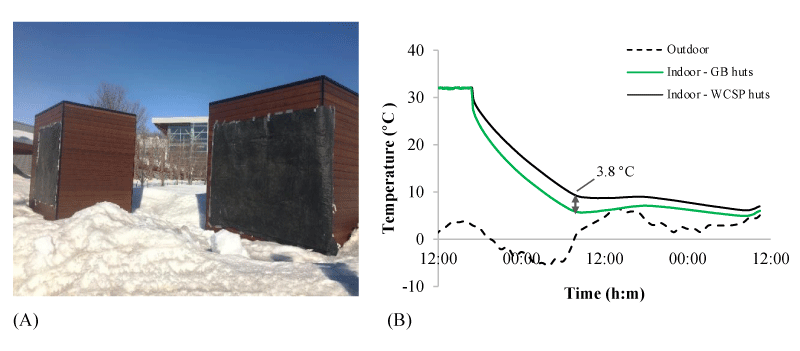
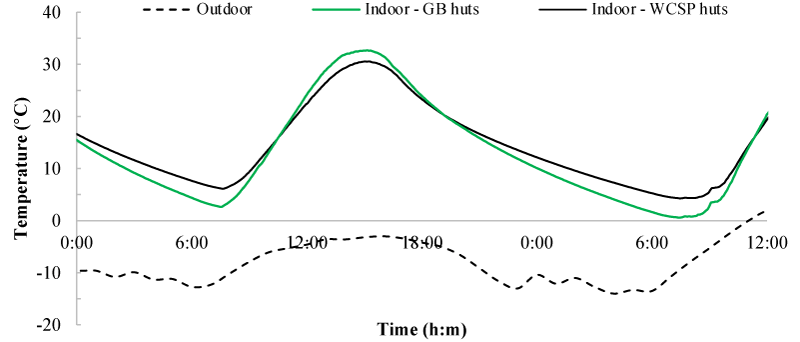
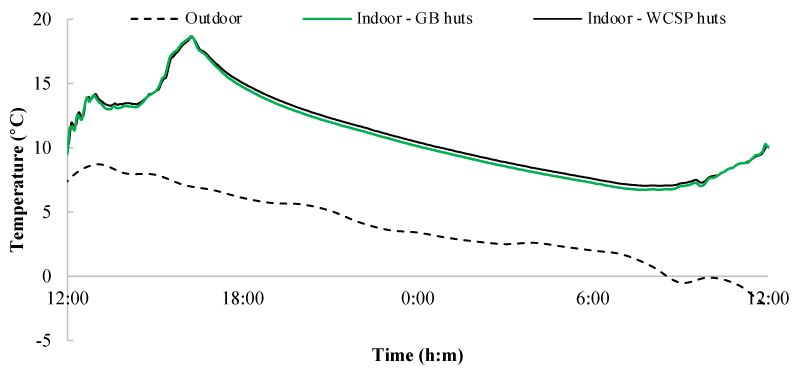
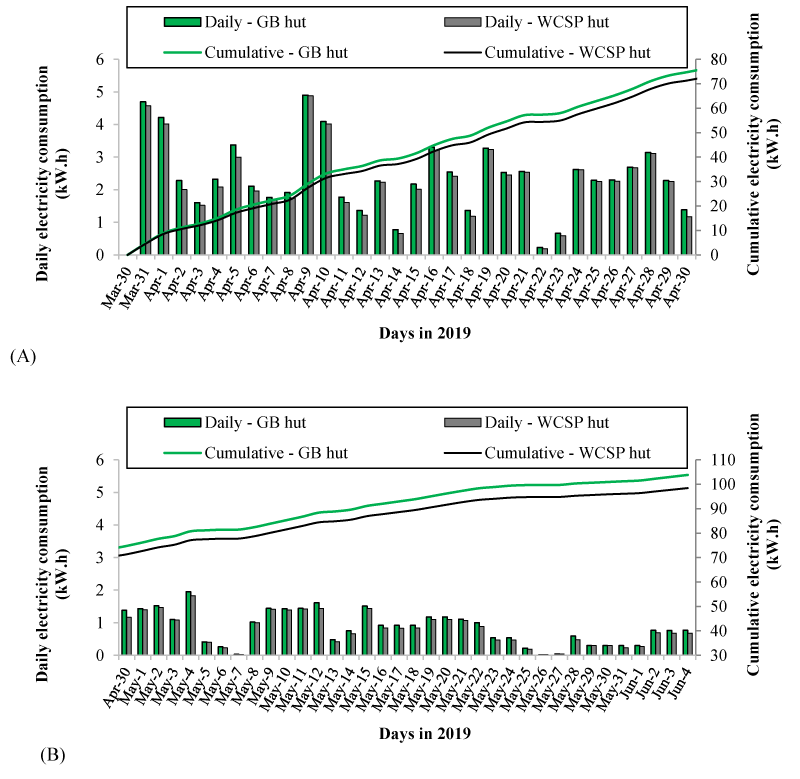
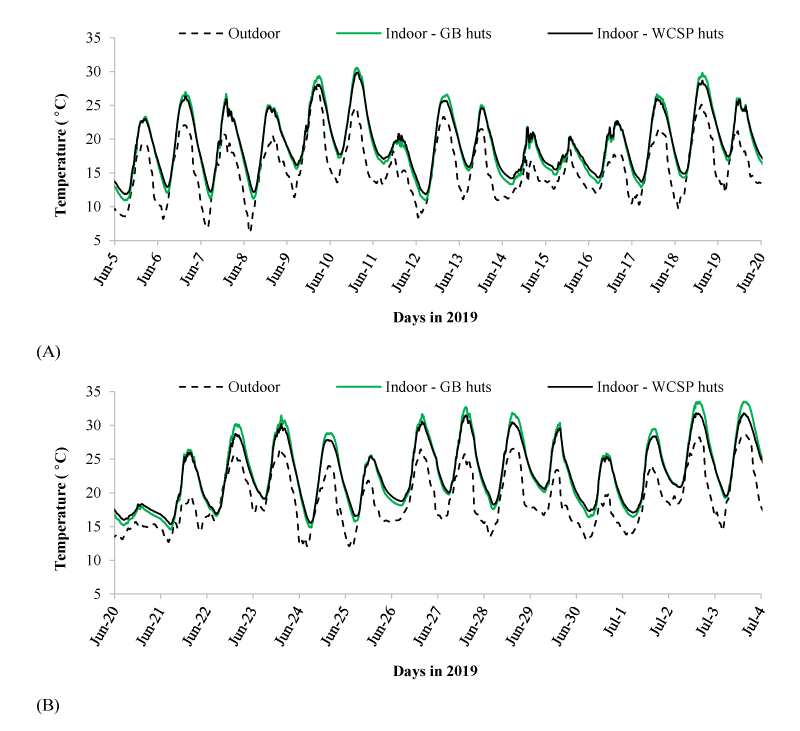


 Save to Mendeley
Save to Mendeley
